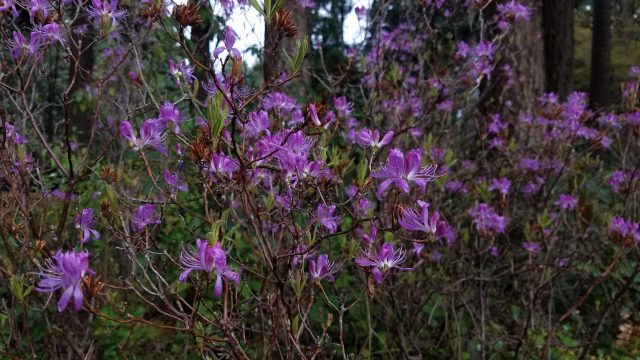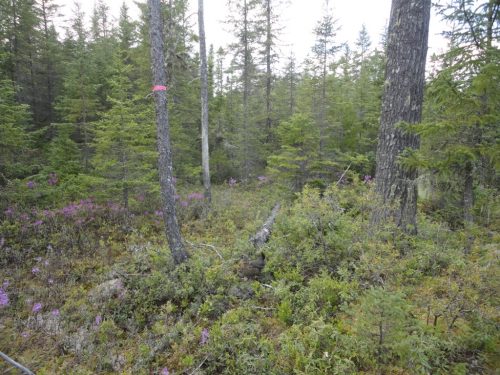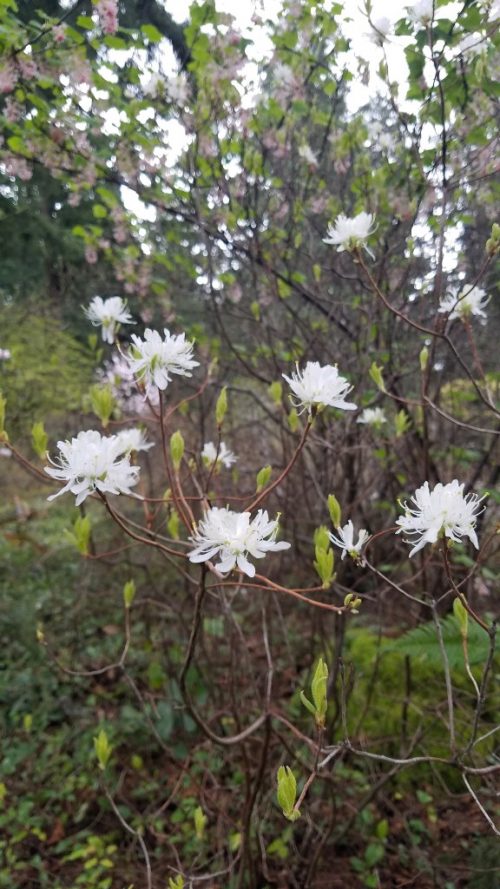by Jillian Demus
Rhodora is native to Pennsylvania and New Jersey northward to Ontario, Quebec and the Canadian Maritimes. The name comes from the old genus name, Rhodora, when it was thought to be in its own genus due to the odd, tubeless flowers. In the wild, this azalea blooms in early-late May and mid-June for the higher elevation populations, declaring the beginning of summer. They grow in wet, acidic lowlands and swamps along with species like black spruce (Picea mariana), Bog Labrador tea (Rhododendron groenlandicum), kalmias (Kalmia sp.) and various blueberry species (Vaccinium sp.). This deciduous shrub rarely exceeds 3 feet in height, but when many individuals bloom in large swaths, it is breathtaking. I spent a summer in the north-woods of Maine, monitoring spruce grouse, where Rhodora was very common. I have included a picture of an alert male spruce grouse wearing a radio collar as we took vegetation and locational data.
These flowers attract a variety of butterflies, flies and bees. Rhodora has a distinct relationship with the rare bog elfin butterfly (Callophrys lanoraieensis) that drinks its nectar after hatching. As a caterpillar, they feed exclusively on black spruce leaves nearby. Another unique relationship is with the Columbia silkmoth (Hyalophora columbia) that uses Rhodora as a larval host. However, this plant does not get eaten by deer, perhaps due to the hairiness of the leaves.
The species blooms at the RSBG in mid-March to April. We have a large patch of these deciduous shrubs just near the entrance. This is one of my favorite rhododendrons because of their explosive, butterfly- looking flowers. They have a large pistil (female parts) and long stamens (male parts) that protrude farther than the very dissected rose to lavender petals. Rarely, the flowers can be white, like this form at the RSBG shown here.
The petals are divided into 3 lobes above and 2 fringed-like petals below. After the blooms, the gray-blue-green leaves come out for summer. In autumn, the capsules open with tiny seeds and the leaves turn a reddish-purple hue. Apparently, the white form has more yellowing leaves in the fall and seems to flower a week or so earlier. Hopefully next year you can swing by the garden to witness these wild blooms!



